Does the Sigma 70mm F28 Dg Macro Art Lens for Sony E Focus Internally

Sigma'southward commencement macro lens in the Art series has flown somewhat nether the radar, overshadowed past the more flamboyant lens announcements (Sigma 14-24mm f/2.8 Fine art, 105mm f/one.4) along with the announcement of the Sony FE retrofit of the ART series. Sigma's approach is a piddling different from the established conventions in focal length, focus method (the lens focuses externally and employs a focus-past-wire system), and eschews the image stabilization that most modern macro lenses apply. What they have done, yet, is focus on the ART series priority – optical operation – on which the Sigma 70mm f/2.eight DG Macro ART definitely excels. Information technology is extremely sharp at all focus distances. It also has weather sealing, and, continuing in the delightful trend from the fourteen-24mm ART, it is fully compatible with Canon's Lens Aberration Correction (only the second tertiary political party lens that this is true of). But are these things plenty to make the 70 Fine art Macro worth adding to your kit? Read on to observe out!
Check me out on: Google+: | Facebook: | Twitter: | Flickr: | 500px: | Sign Up for My Newsletter :
Prefer to spotter your reviews? You can see my full video review here:
Sigma 70 Art Macro Build and Blueprint
I refer to this lens as being somewhat quirky, mostly considering it is seems somewhat out of step with everything else that Sigma has done recently. Sigma has carved out a niche for the Art serial by offering loftier resolution lenses (which this lens does qualify for!), but also by offering lenses with wider maximum apertures that what is typical, exist it at that item focal length or zoom range. 70mm is a slightly oddball focal length, and the maximum discontinuity of f/2.8 is in no fashion unusual. For a closer look at the lens, bank check out this video episode where I take you up close and personal with the lens:
What makes this lens unusual for a 2018 release is what is missing, namely an internally focusing design and a lack of OS (an optical stabilizer). This is also the first ART series lens (for DSLRs) to not have Sigma'due south HSM focus motor (HyperSonic Motor) – a band-type focus motor. Let'south accept a moment and examine what each of these things mean.
First of all, this lens is not internally focusing, which ways that the inner barrel extends like a piston when focusing towards the macro range. In fact, you can actually get reproduction ratios by seeing the markings on that inner barrel as information technology extends:
Sigma has this to say on the topic: "In recent years, macro lenses in the standard range accept tended to employ inner focusing with the goal of maximizing autofocus speed. In dissimilarity, the new SIGMA 70mm F2.viii DG MACRO | Art lens is designed to prioritize optical operation, fulfilling the enervating image quality requirements that define the Fine art line." I've used a lot of internally focusing lenses with amazing eyes, but I've besides got two lenses that externally focus and are incredibly sharp (Zeiss Milvus two/135mm and Voigtländer APO-Lanthar 65mm f/ii Macro). I'm not sure that I follow the reasoning of why Sigma conflates external focus and image quality, simply the lens does accept excellent image quality, so I'll concede this point to them. On a practical level know that using the lens hood here is peculiarly of import, every bit at no time does the front element exceed the length of the lens hood, pregnant that the forepart elements stays protected…if yous are using the lens hood. Here you tin see what things look like with the lens hood in identify and the lens completely focused to macro.
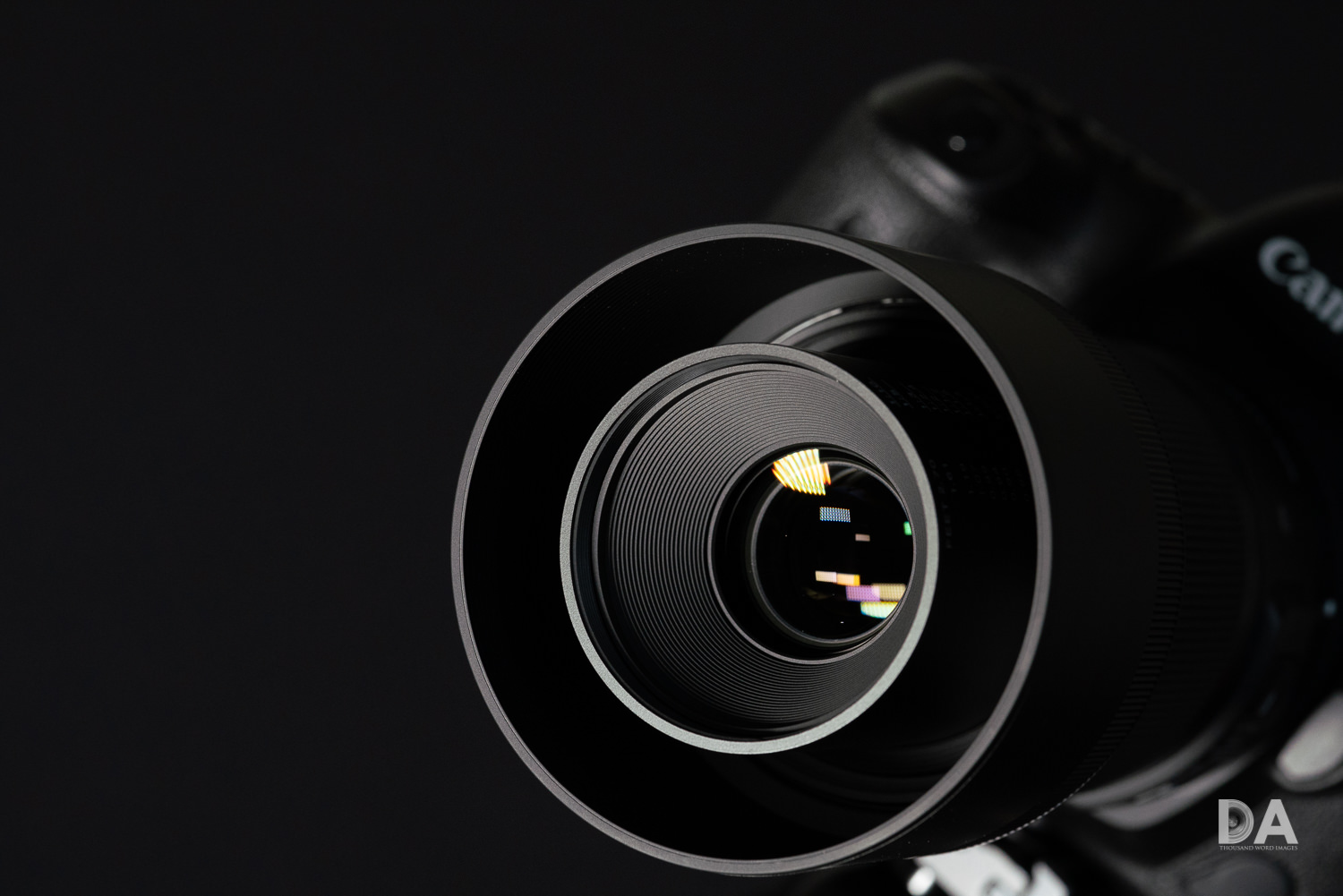
A byproduct of this inner barrel extension is that the lens has a fairly tiny filter thread of just 49mm. The lens bucks the general trend of Sigma Art lenses being large and heavy all around, in fact, as the lens is a moderate two.79 x 4.17″ / 70.8 x 105.8 mm (Diameter x Length) and weighs 1.xiii lb / 515 g. This isn't small in an absolute sense, but it is very reasonably sized and slightly smaller than some competing lenses.
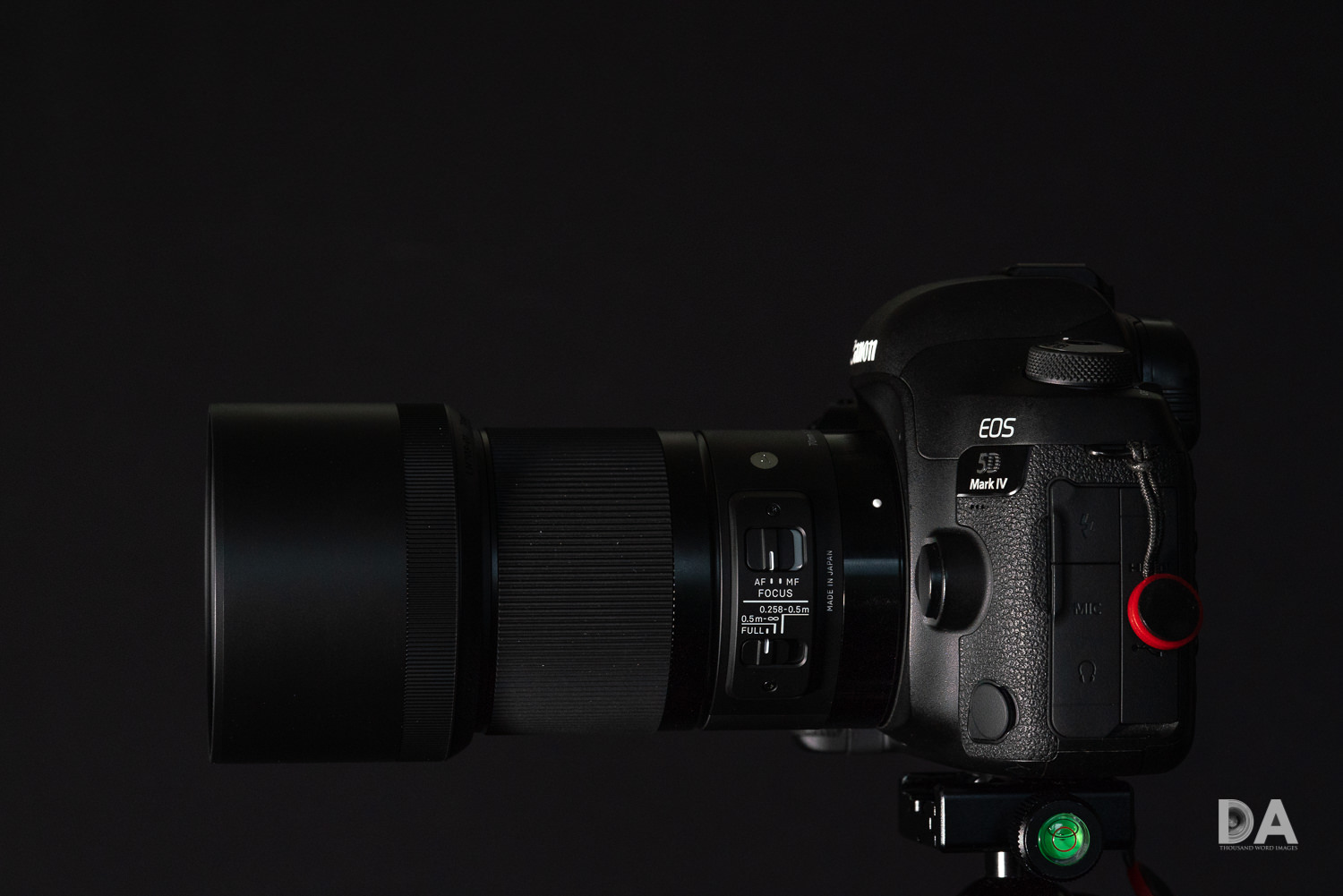
More than puzzling is that this lens does not accept OS. Pretty much everyone started putting image stabilization in their macro lenses about vii years agone because, of all lenses, macro lenses are the near enervating to handhold (at macro distances). Depth of field becomes incredibly small at macro distances, and constructive aperture reduces (meaning that the lens needs more and more light the closer you become to a discipline). Many hardcore macro shooters work only from a tripod for this reason, though i still has a problem if their subject moves at all. Most macro lenses with a stabilizer have one especially designed for macro work (Canon calls this a "hybrid IS"), and I can attest that it makes a huge departure. Yes, when I'one thousand serious about macro piece of work, I use a tripod, simply I likewise find that macro lenses are very flexible "run and gun" lenses, allowing i to capture a variety of subjects. If I'1000 hiking, for example, I don't want to be carrying a tripod. I plant using the 70 Art Macro much harder for this kind of work.
When I used information technology on the a7R3 and it's excellent IBIS (Steadyshot Inside), I was able to shoot a handheld macro similar this of the top of a Pepsi can. Good luck doing that on a Catechism or Nikon without that stabilization.
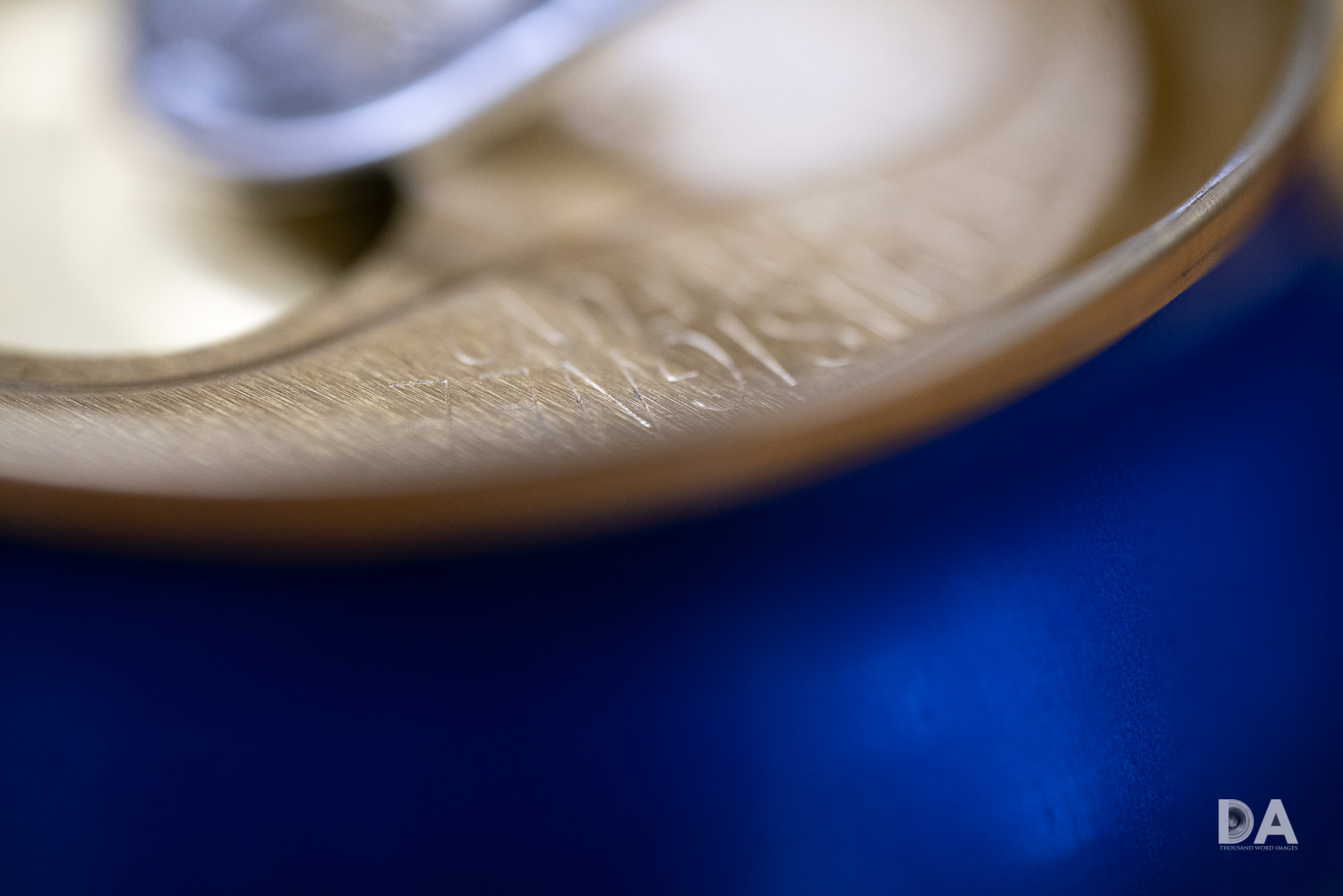
It wasn't so much about stabilizing the final result (yous can hands solve that by using a fast shutter speed), simply rather more about holding the lens still long enough to focus on the minor expanse where I wanted focus. Suffice it to say that I really missed Os for the situations where I ofttimes use a macro lens. Sigma designed this lens for macro purists who are willing to do their macro work from a tripod and are more concerned with epitome quality than anything else. Fair enough, only that does limit the entreatment of the lens to a wider audience, peculiarly when Tamron's exceptionally good 90mm f/2.8 VC Macro from their SP serial costs just $xc more. In some ways this lens makes most sense to me on Sony Iron where it can take reward of Sony'southward first-class IBIS (In Trunk Image Stabilization). I call up Sigma'south conclusion to exclude Os from this lens is going to haunt them.
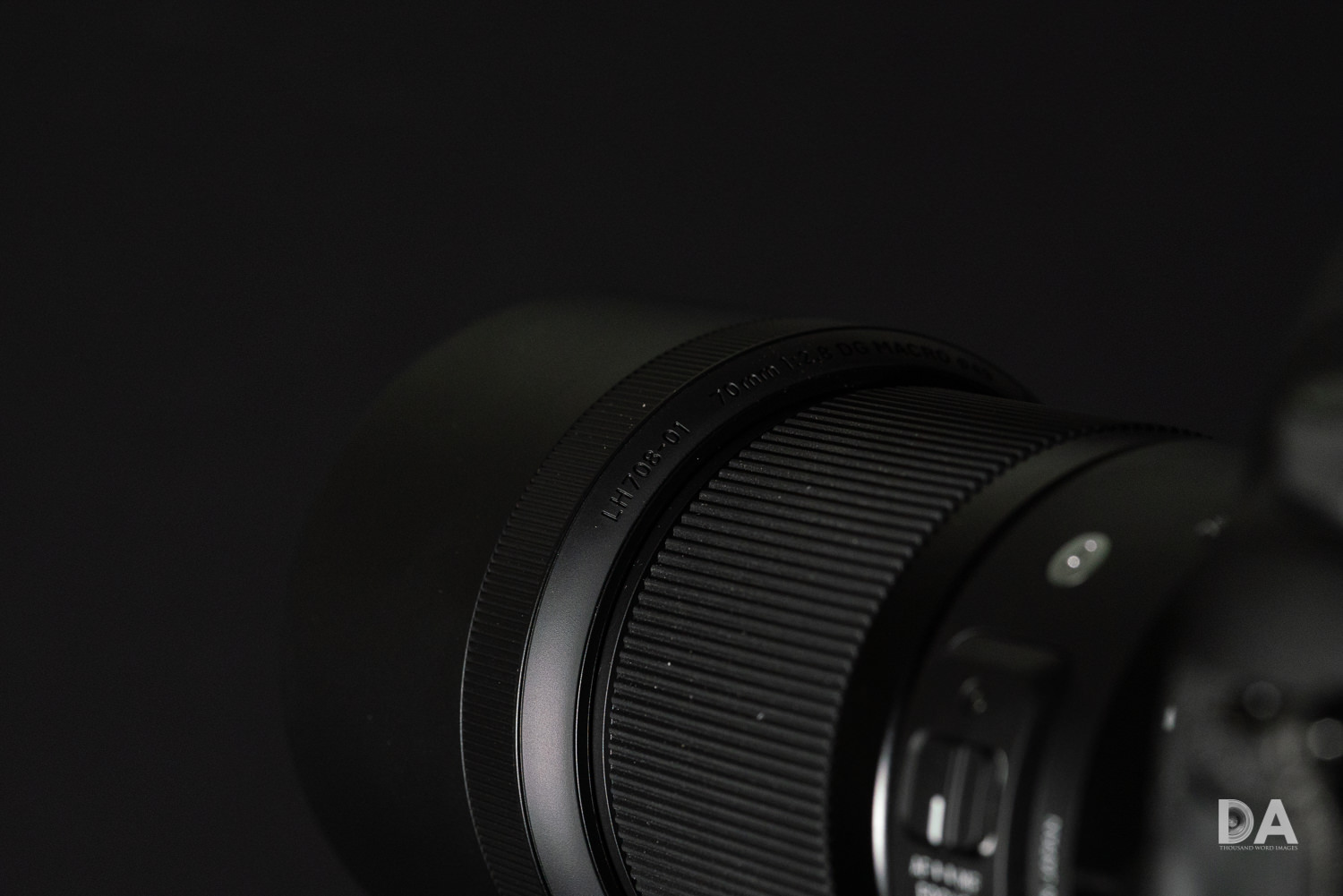
The general build of the lens is very adept. Information technology has the now-familiar Sigma Art series blueprint, which is sleek and modern in night, understated way. The lens comes with both lens hood and a overnice padded, pouch. While it doesn't have more robust weather sealing of the new 105mm f/1.4 Fine art lens, it does at to the lowest degree have some dust and moisture resistance at the lens mountain (better than zero!) The mount is brass and the body a blend of metals and engineered plastics (or "thermal composites" as per Sigma)!
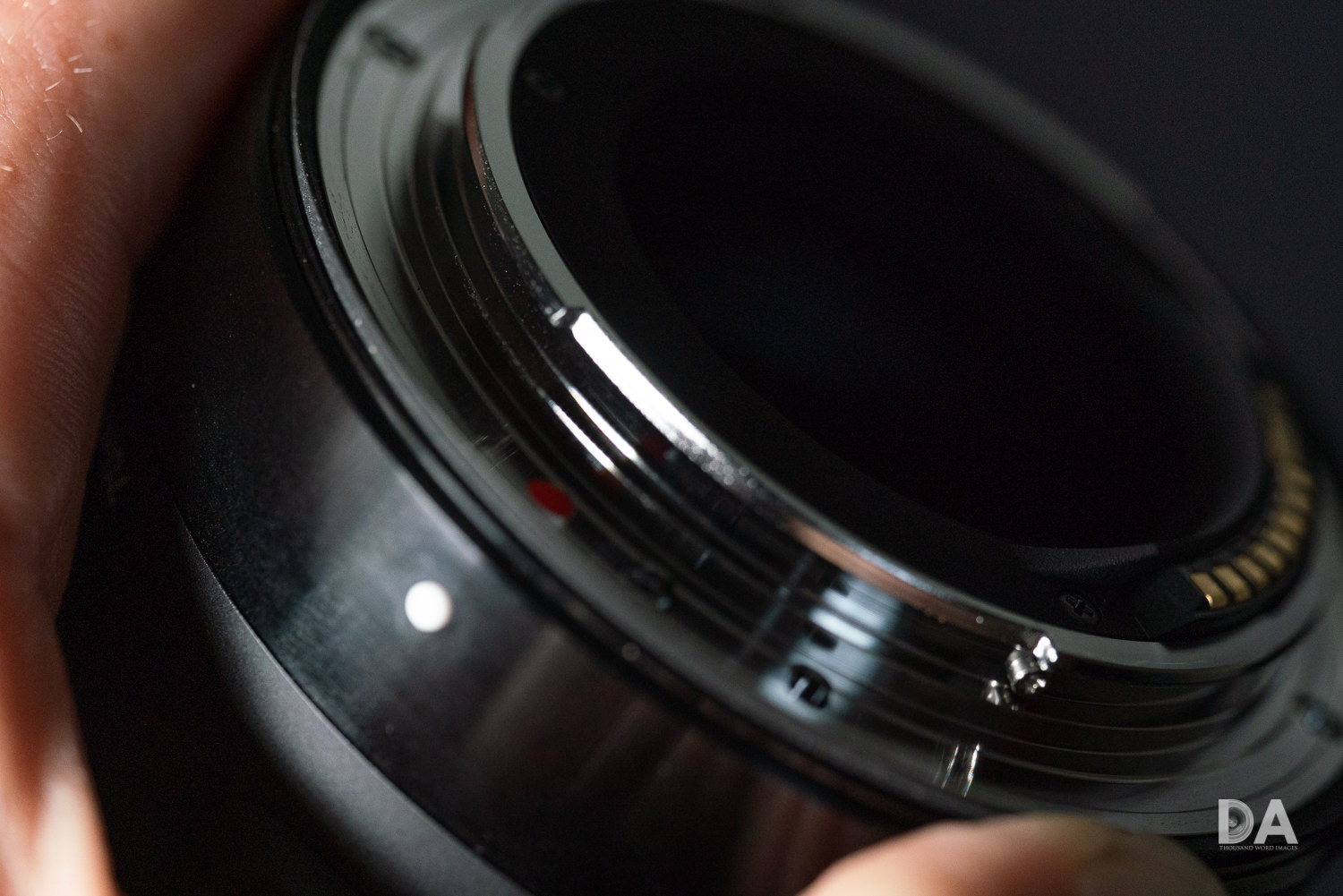
Equally is typical for ART lenses, it employs a nine rounded blade aperture iris design, which is very effective at maintaining a circular shape with the lens stopped downwards. The minimum focus distance on this lens is 10.16″ / 25.8 cm, a piffling lower than either Tamron's 90mm Macro or Catechism'south 100mm macro options. It is a full 1:ane macro lens.
I consider this focal length to be a skilful choice for those that shoot food or product photography, where the slighter wider framing may come in handy. Those that shoot insects or moving things might adopt the longer working distance of a longer focal length.
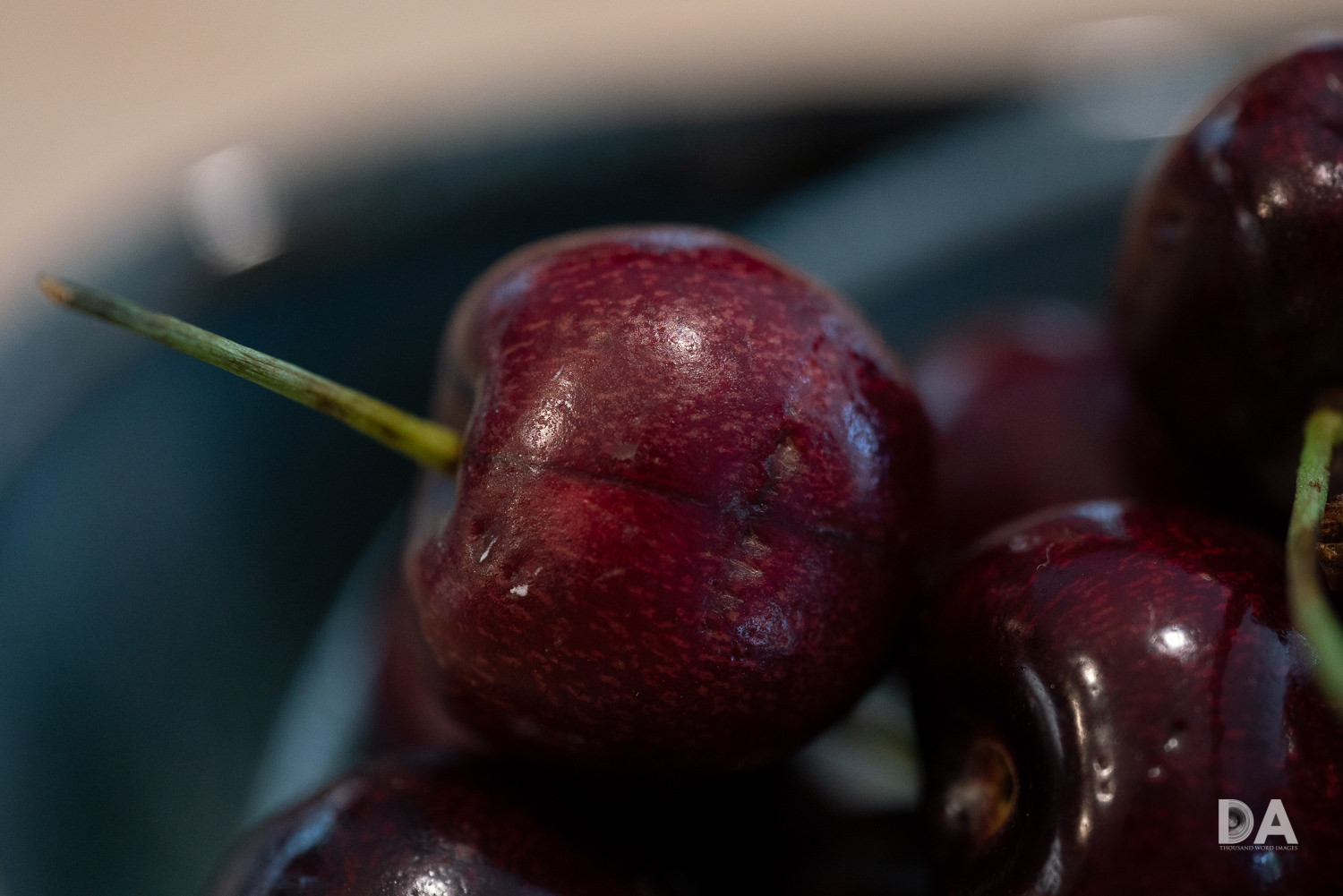
Information technology should be noted that this lens is compatible with Sigma'southward teleconverters, which gives y'all a few options. It can also exist used with Sigma's USB dock (for firmware updates, focus calibration, and more than), is eligible for Sigma's mount conversion service, and also is compatible with the MC-11 adapter for Sony (though with a few quirks).
Sigma 70 ART Macro Autofocus
The final somewhat odd element of the Sigma lxx ART Macro is Sigma'due south conclusion to go with a focus-past-wire organisation rather than a traditional HSM motor here. I'll give y'all Sigma's marketing/explanation followed past my thoughts. "The focus-past-wire system eliminates the straight mechanical connection between the focus ring and the focus bulldoze arrangement. Controlled past SIGMA'south latest algorithm, a newly adult coreless DC motor adjusts focus with optimal speed and low noise. Total-fourth dimension transmission focus is available fifty-fifty during autofocus, allowing the lensman to make minute focus adjustments simply by turning the focus ring. In add-on, the focus ring's large angle of rotation helps the lensman achieve the extremely precise focusing required for effective macro photography."
I'one thousand afraid I can't swallow all of this. First of all, Sigma's HSM motors are typically fairly quiet anyway, and the statement well-nigh "optimal speed" is pure marketing – the autofocus is quite dull, peculiarly if yous are doing major focus changes. Using the included focus limiter is going to exist key here, as focus speed is fine for smaller focus changes. Going from macro to infinity is somewhat leisurely, though.
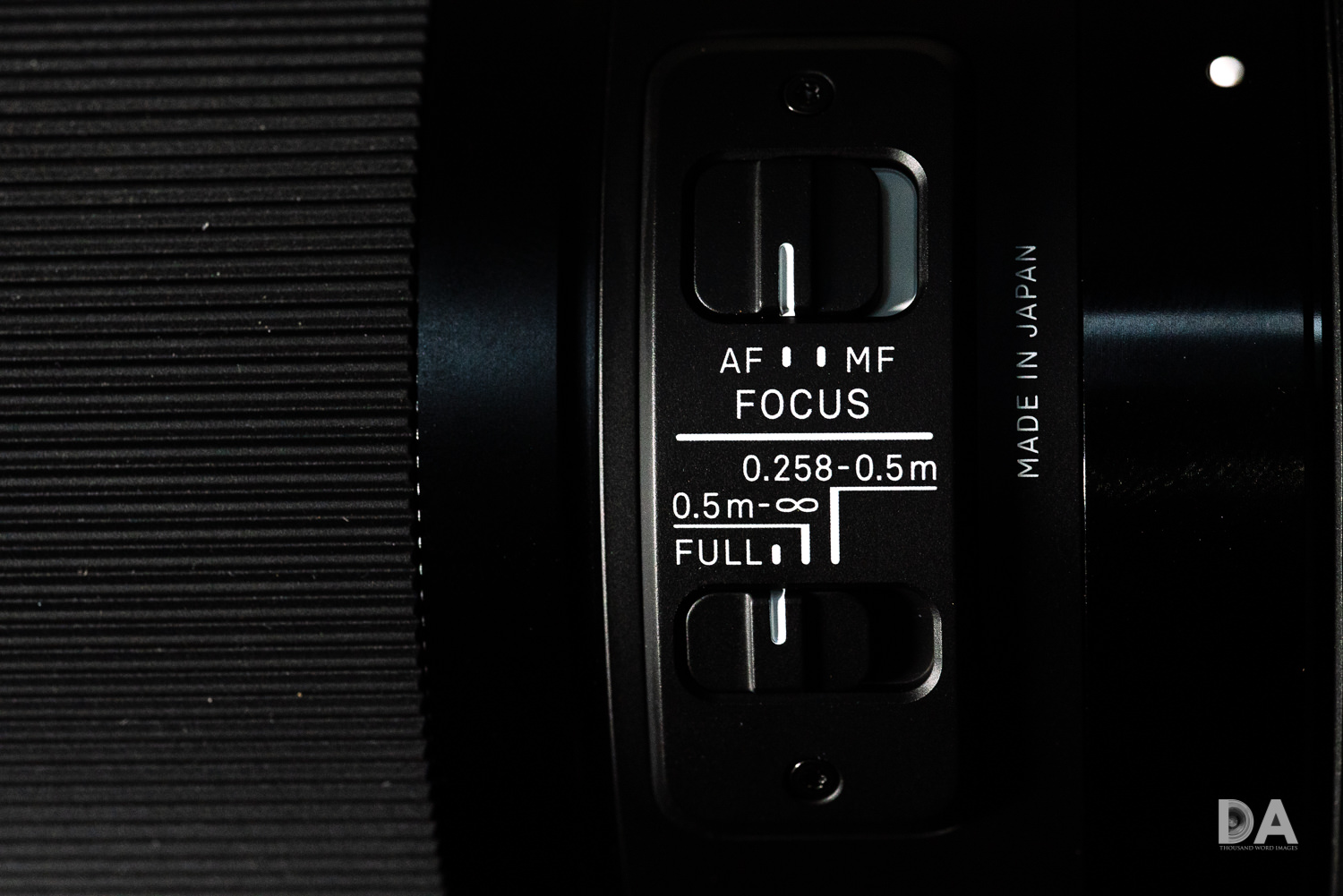
At beginning I idea this was a wise decision by Sigma, as information technology seemed like the lens was going to be a natural to conform to to mirrorless. Sigma ART lenses are some of the very all-time lenses to arrange to Sony FE already due to their MC-11 doing a great chore in helping lenses make that transition. I was somewhat disappointed by what I found when adapting the lens to my Sony a7R3, though, as the lens tended to hunt at times, get stuck sometimes, and in other occasions refused to focus on the foreground object that I wanted it to focus on. In this image of a flower, for example, the camera refused to focus on a very obvious foreground subject. In the 2nd paradigm I actually manually focused into the right zone, and the focus organization "woke back upward" then.
The paradigm quality results were splendid (this is an optically superior lens!), but I didn't particularly enjoy the experience due to the inconsistent character of the focus. I'grand actually interested in testing an bodily FE mount lens, equally I suspect it will operate much better. I did bank check both the lens and my MC-eleven for firmware updates, but while there was an MC-11 update, it didn't address my bug. Perhaps a futurity firmware update to one or the other volition amend this performance. Here'due south a few shots taken with the Sigma/Sony combo:
A byproduct of the focus-by-wire organisation is that the traditional altitude window is eliminated from the barrel, though if y'all take off the lens hood and wait at the barrel markings you volition get a similar issue. Focus-by-wire lenses require the camera to be on and awake before any input to the manual focus ring does anything. There is no direct coupling to the elements, and so all input has to be routed through the focus motor. I'm skeptical that this is what macro photographers really want as these systems tend to take poorer tactile feedback and less precision, though, to be off-white, focus-by-wire systems are vastly improved over where they were a few years agone. Y'all tin utilize full-time manual override, only the camera must exist on and agile for this to work. Let's just say that this lens is no Zeiss for transmission focus elation.
On a far more positive annotation, the autofocus accuracy was generally excellent correct out of the box in my tests on my Canon 5D Mark Four. I didn't feel that any calibration was necessary, as the lens nailed focus once again and again. There was 1 oddity, though. I have a setting enabled on my 5D Mark IV where simply the cantankerous-type AF points supported past a given lens volition testify upwards (I value accuracy over having more points). I had the fewest points available to me of any lens I've used, with only the heart group lighting upwardly for some reason. I've used a lot of Sigma lenses earlier and never seen anything similar that before.
This lens would be also dull to proceed up with very fast action, but I did shoot a few things moving moderately fast (similar the Luge riders at the Skyline Luge Mont Tremblant) and was able to stop that action fine.

All in all, the focus organisation leaves me with some unanswered questions. It probably makes most sense on Sony, but I was surprised that the feel with MC-11 was actually sub-par compared to other ART lenses adapted with it (the 105mm f/1.4 ART I was reviewing at the same fourth dimension worked very well). It works fine in what it does, and focus accuracy was excellent, but the slower focus speed, limited focus points, and the disappointing MC-11 performance left me a little underwhelmed.
Sigma 70 Art Macro Image Quality
To this bespeak in the review, I'1000 sure you've gotten the impression that I'm somewhat awestruck by the seventy ART. Fortunately, this is where things take a definite turn for the better. Sigma made this lens all about the image quality, and it delivers here in spades. For those of you that have skipped correct here, hither's a brief recap of this focal length (a somewhat anarchistic ane). I like shorter macro lenses for things like food and product photography, where a longer lens is sometimes a detriment. I practice a lot of work in my Angler Port-a-Cube low-cal tent, and my Canon 100L Macro is sometimes a niggling tight for that kind of infinite. I don't like the 70mm focal length also for portraits or used as a short telephoto, every bit information technology doesn't compress the image equally much or blow out the background the aforementioned fashion. It likewise doesn't have as big of working distance as longer focal lengths for photographing insects or other things that might exist scared off by getting also close. You demand to determine how you intend to use your macro lens and whether this focal length is an nugget or liability for the kind of work you want to do.
The 70 Art is supported by Canon'south Lens Aberration Corrections in camera, which is a huge recent development for Sigma. Prior to the release of the 14-24mm f/2.8 ART lens no third party lenses were supported past Canon'due south in photographic camera corrections, which was a baked-in advantage for first party (Catechism) lenses. Somehow Sigma has gotten access to this (most likely through some kind of internal understanding with Catechism), which now extends this advantage to Sigma (other third party lenses that I've reviewed in this same time period are Non supported). The seventy ART is the 3rd Sigma lens in the by few months that I've reviewed that has been supported, and information technology is a significant advantage for these lenses. What this means is that all of your JPEGs are fully corrected in camera for things similar vignette, chromatic aberrations, and distortion (if you enable these corrections). In this case, the lens really has relatively few issues in whatsoever of these areas (other than vignette at f/two.8) information technology does enable you to get swell looking JPEGs right out of camera. This is particularly helpful for the times you lot A) need to speedily get images to clients without an opportunity for editing or B) want to prove images to clients. I like to shoot with RAWs recorded to one card and JPEGs to another for this purpose. Sigma's new access to this allows their lenses to compete on a level playing field with Canon lenses in the Canon space, and gives them an advantage over other third party lenses for now. Sony is not restrictive on third party lenses, so the FE mount volition have similar Sony support…but that's non unique or unusual. For Canon shooters, withal, this is a big deal.
My coverage of image quality falls into two categories: 1) Resolution, where I cover sharpness and contrast and 2) Rendering, which looks at the global look of images in areas like color rendition, bokeh, flare resistance, chromatic aberration, etc… I would recommend that you lot sentry the post-obit video episode where I interactively breakup the optical performance of the 70 Fine art in detail:
Resolution:
I used a strong competitor in this field as a criterion for this comparison – the Canon EF 100mm f/ii.8L IS USM. I've owned this lens since before long afterward its release and have used it for literally thousands of production shots for dozens of companies. I've also used it as a point of comparison for diverseness of other macro lenses released since I've owned information technology. While the focal length isn't identical (Sigma alone makes a 70mm Macro), I've made minor adjustments to the photographic camera position to accommodate the difference in framing.
With both lenses wide open (f/2.viii), I discovered the following. Both lenses metered identically and seemed to deliver similar light transmission. Both lenses showroom some vignette to roughly equal degrees, and neither lens shows any visible distortion (very important in a macro lens!) The vignette will exist cleared up either in post (by applying a lens contour), or can be corrected for in-photographic camera for JPEGs with either lens. Both lenses prove roughly equal amounts of middle sharpness and contrast, but the Sigma is a little better forth the edges of the frame (though both lenses are excellent across the frame). This is a very stiff performance, as the Canon is an exceptionally proficient lens. The Sigma delivers only a slightly warmer color temperature than the Catechism (a typical Sigma trait).
As you lot tin can see from the crops from this handheld landscape photo, the image quality is nearly perfect even broad open from the Sigma 70 Art.

At f/4, the vignette mostly clears away on both lenses and they evidence a fairly even illumination beyond the frame. You can see from this comparison just how much the vignette lifts (this is from the right upper corner).
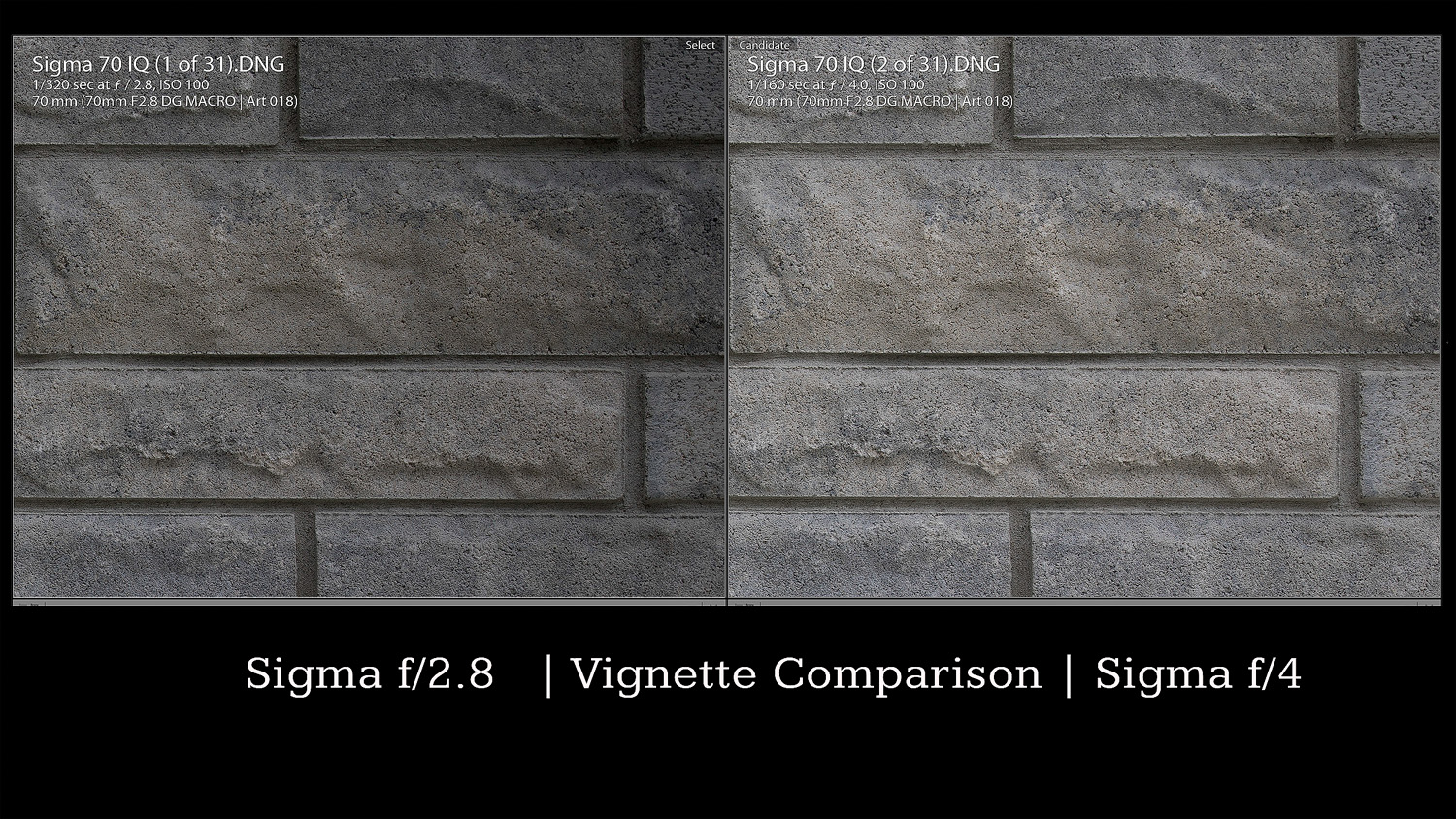
The Sigma makes a more than meaning jump than the Catechism at f/4, and the edge functioning is merely brilliant. The Sigma shows slightly more resolution along with higher microcontrast levels. Note how there is no haze in the stone textures anywhere. This is basically a perfect optical functioning.
There is little more to exist gleaned when stopping the lens down further, as both lenses deliver fantastic optical performances stopped down.
The Sigma 70 ART can exist stopped down to f/22, though except that diffraction will beginning to cause a scrap of softness to creep in at smaller apertures beyond f/11 (how much depends on the resolution of your photographic camera torso). Hither's a few more shots at typical landscape apertures (f/5.vi-f/eight) that show but how fantastic the lens is for resolving even at infinity.
Rendering
We've seen that the Sigma 70 Art is a fantastically abrupt, contrasty lens, but what about other metrics? Permit'southward take a look at a few more than comparisons with the Canon to glean a few more insights. In these comparison photos, we will wait at the three things: 1) the overall rendering in terms of the "wait" of the images including global contrast, color rendition, and bokeh. 2) the microcontrast – local contrast at a pixel level and how it affects textures and iii) the bokeh rendering (defocused area).
In these comparisons information technology becomes clear what the 70 ART'south strengths and weaknesses are. It is a potent lens when it comes to color rendition, global contrast, and microcontrast. In both main images and microcontrast crops you tin can run across that the contrast metrics favor the Sigma (all settings were equal here). The plane of focus shows fantastic degrees of contrast and the color rendition looks great.
The great challenge for a lens similar this, even so, is to do the opposite in the defocused region, where yous desire less contrast and no sharpness. You want a flossy out of focus area without hard lines. The Canon is the ameliorate lens here, with noticeably softer, creamier bokeh.
At macro distances, however, this is less of an issue. Here'southward a look at virtually-macro framing at f/2.8, f/iv, and f/5.6:
Moving in fifty-fifty closer, and the bokeh looks beautiful.

I likewise liked this prototype, where I felt like the great contrast helps my subject to stand out even though I was quite a distance from him when taking this shot.

Here'due south a substantial gallery of "bokeh" images taken at a multifariousness of focus distances so that you tin can determine for yourself if the 70 Fine art's blend of bokeh and sharpness works for you.
What'south indisputable is that Sigma has nailed chromatic aberration correction on this lens. The primary reason for that very high microcontrast is an extremely low amount of CA. In this photo of water aerosol (it'due south not monochrome), only a low colour subject), at that place is no visible CA before or after the aeroplane of focus.
I likewise detect these white blossoms to be a hotbed of chromatic aberrations because of the high contrast inherit to them…just there are none to be seen, even at f/two.8 hither.

This actually helps the lens to shine for food or production photography, which, every bit you can see from these images, it does very well at:
Flare resistance was besides a strength for the lens. I didn't torture test it, per se, but information technology worked well in all of the real-world shooting situations I constitute myself in:
So, exterior of some slightly busy bokeh in some situations, I think the image quality from this lens is exceptional. I would encourage you to visit the Lens Image Gallery and look at more than photos. Evaluating real photos is very beneficial for evaluating what a lens is capable of. I purposefully do minimal editing on these images so that you tin better evaluate its potential.
Conclusion

Every bit I said previously, the Sigma 70mm f/two.8 Macro | ART is a somewhat quirky lens. It deviates from the path established for the ART serial on a number of levels, and as well deviates from the modern standard of what a macro lens should have (Paradigm Stabilization, Internal Focus, etc…) The i surface area where it is very much a Sigma ART lens is in the optical performance, where it delivers as good a operation equally I've seen from a macro lens outside of bokeh that is a little busy in some situations. I'm less impressed by the decision about the focus motor, at least on DSLRs, and frankly surprised that the functioning on Sony via the MC-11 (at the moment) isn't amend. I'1000 sure that the FE version optimized for Sony probably works well, and the choice to go with the focus-by-wire DC focus motor makes perfect sense there. In fact, I wonder why Sigma didn't just go all in and develop this lens purposefully for Sony. The lack of OS is not really an outcome there, and they could accept probably made it even smaller and more attractive by purposefully designing information technology there. The reasonable price point (this is the least expensive lens in the Art series) would have made it very bonny to Sony buyers equally Sony's 90mm f/2.viii Macro, while reportedly excellent, costs twice as much. The lens that Sigma made seems somewhat stuck between a mirrorless and DSLR lens, and suffers for information technology despite its fantastic optical performance. I'm left with the conclusion that Sigma designed this lens mostly for macro shooters who want this kind of focal length for dedicated macro work and typically work from a tripod. For those of you that want a general purpose macro lens that can double as a portrait lens, consider other options. The Tamron SP 90mm f/ii.8 VC that I reviewed here is a compelling alternative.
Pros:
- Solid build including some weather sealing at the lens mount
- Compatible with teleconverters, Sigma MC-11, and USB Dock
- Exceptional image quality at all apertures
- Fantastic microcontrast
- Low distortion
- Perfect chromatic aberration command
- Good flare resistance
Cons:
- Focus motor quite slow
- Lacks an image stabilizer
- Focus-by-wire non optimal for macro photographers
- Inconsistent operation on Sony via MC-11 (Atomic number 26 version works fine)
- Bokeh can be slightly busy at some focus distances
Gear Used:
Sigma 70mm f/2.8 DG Macro Art: B&H Photo | Amazon | Amazon Canada | Amazon Britain | Amazon Germany | Ebay
Canon EOS 5D Mark Iv (5D4): B&H Photo | Amazon.com | Amazon Canada | Amazon Uk
Sony a7R 3 Camera: B&H Photo | Amazon | Amazon.ca | Amazon UK | Ebay
Peak Blueprint Slide Light: Acme Design Store | B&H Photograph | Amazon | Amazon Canada | Amazon Uk
Sony a6500: B&H Photo | Amazon | Amazon.ca | Amazon Britain | Ebay
Summit Design Leash Strap: B&H Photo | Amazon | Amazon Canada | Amazon Great britain
BenQ SW271 4K Photo Editing Monitor – B&H Photograph | Amazon | Amazon.ca | Amazon United kingdom of great britain and northern ireland
Adobe Photoshop Creative Cloud i-Twelvemonth Subscription
Alien Peel Exposure X2 (Use Lawmaking "dustinabbott" to get 10% anything and everything)
Purchasing your gear through B&H and these links helps fund this website and keeps the manufactures coming. You can too make a donation here if you lot would like. Visit my Amazon page for some of my gear of choice! Cheers for your support.

Great News! I can now offer a five% discount on all purchases at Amplis Foto, Canada's Leading Photographic Supplier. Please enter discount code: AMPLIS52018DA in your cart. It is skillful for everything in your cart, and is stackable with other coupons, besides! It volition have 5% off your unabridged order! Proceeds go towards keeping this site going and providing yous with new reviews!
Check me out on:
Keywords: Sigma 70mm Art, Sigma 70 Macro, Sigma 70mm Macro ART, Sigma 70 f2.8, Sigma 70mm f/two.8, Fine art, Macro, Sigma 70mm Review, Sigma 70 ART Review, Dustin Abbott, Sigma 70mm f/2.eight DG Macro Art, Sigma 70mm f/ii.8 ART Review, Photography, Sample Images, Video Examination, Sony FE, Catechism 5D Mark Iv, Catechism 5D4, Sony a7R3, Sony a7Riii, Sharpness, Bokeh, Autofocus
DISCLAIMER: This article and description contains affiliate links, which means that if you lot click on one of the production links, I'll receive a small committee. As an Amazon Acquaintance I earn from qualifying purchases.
Source: https://dustinabbott.net/2018/09/sigma-70mm-f-2-8-macro-art-review/